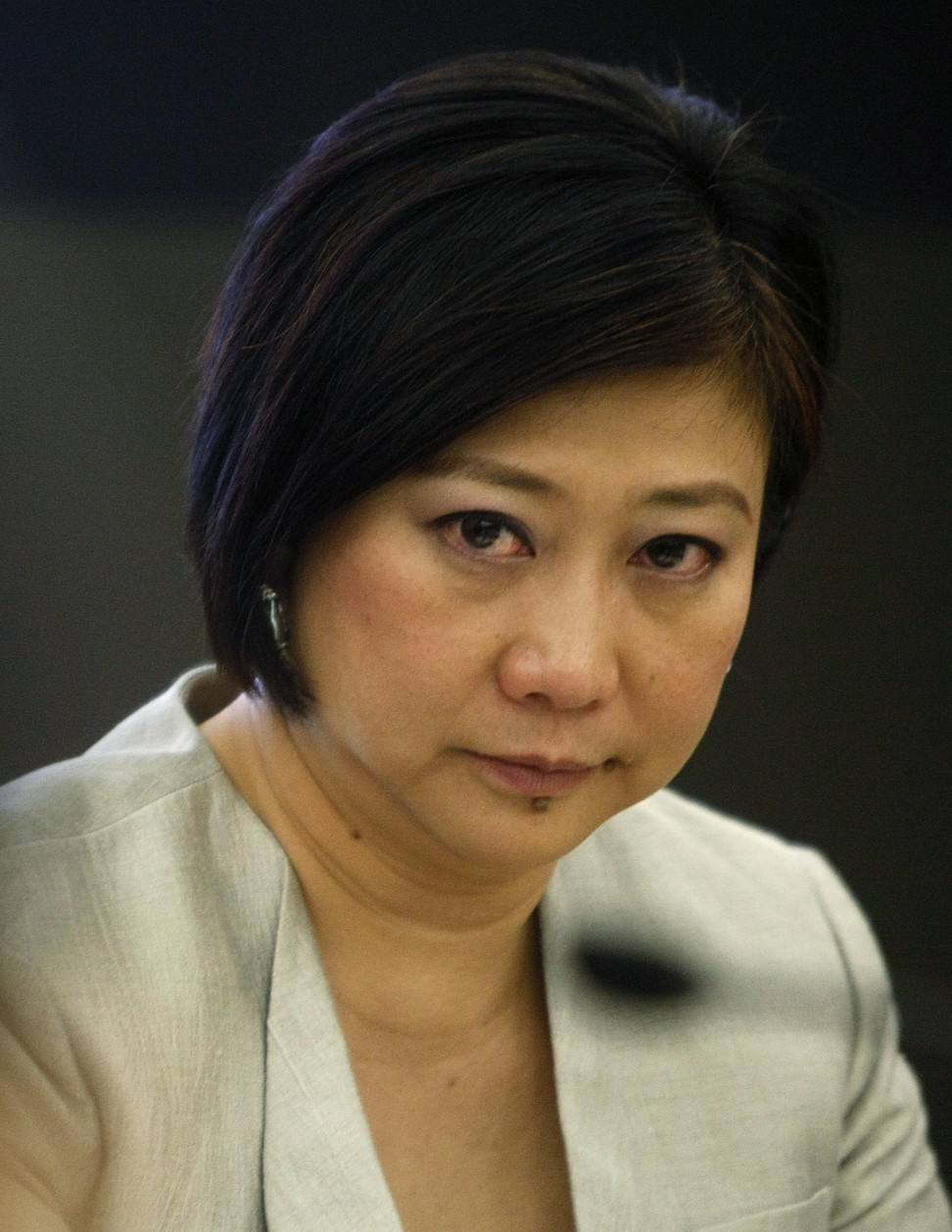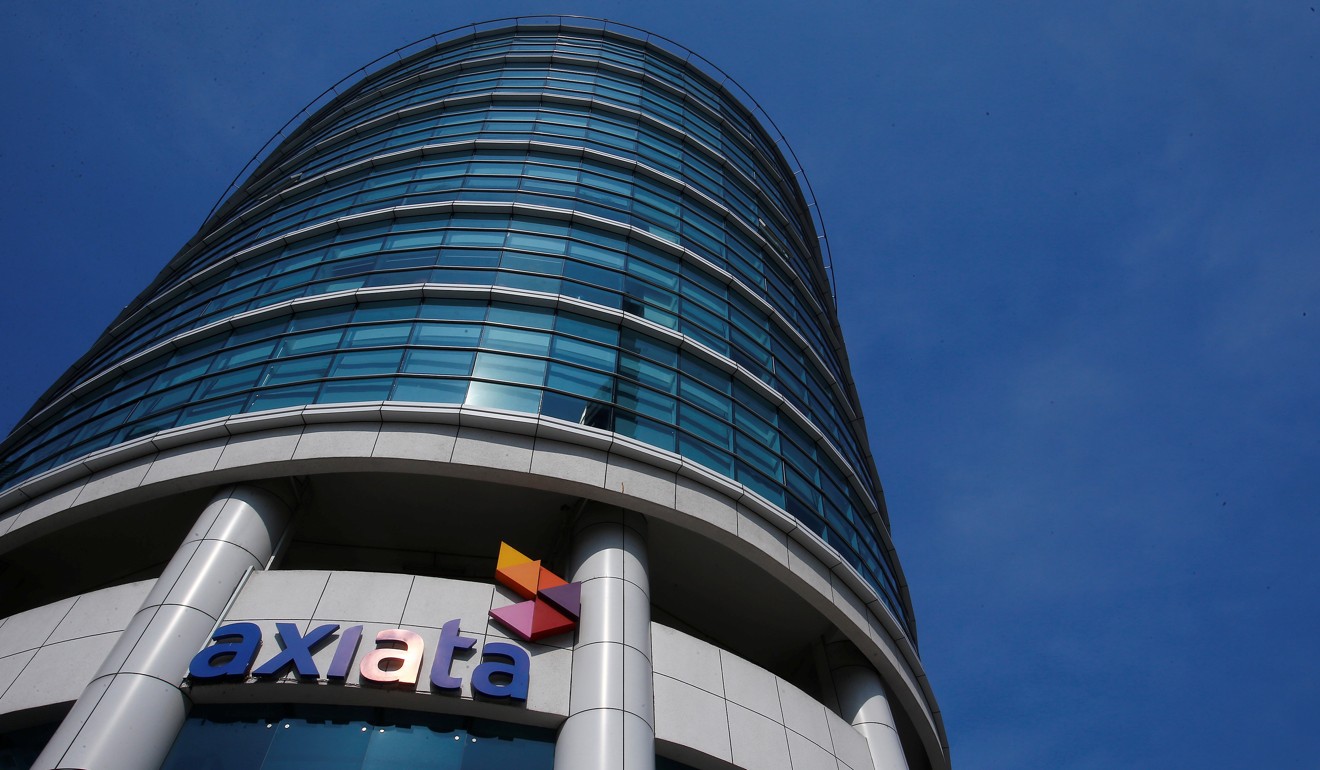
Asia’s digital economy is booming. So why are Singtel and Co struggling?
- As tech firms and internet services ride a wave of success, the firms supplying their lifeline – data and connectivity – are caught in a downward spiral
- But while price wars, falling profits and cost cutting may be bad news for telcos, there’s a payoff for consumers – at least for now
For Singtel’s chief executive officer Chua Sock Koong, 2019 was supposed to be a year to remember.
She began working at Singapore’s biggest telecoms company (telco) 30 years ago, but rather than celebrating the anniversary with a bumper bonus, she took a major pay cut that sliced her yearly earnings nearly in half, to S$3.54 million.
That rude shock came after Singtel reported its net profits had fallen 43 per cent to S$3.1 billion in the year to March – a 16-year low for the firm.
The company was quick to admit the past year had been an especially difficult one. Singtel chairman Simon Israel blamed the results on a “perfect storm” of intense competition and rising economic uncertainty.

Just like Singtel, many of Southeast Asia’s telcos face slowing growth and falling profits, their fates seemingly at odds with that of the region’s internet economy, one of the fastest growing in the world. Telcos supply the internet economy’s very lifeline: connectivity and data. Yet rather than riding the same wave of success, many are struggling.
But the companies supplying the infrastructure behind this boom have far less reason to celebrate. They are facing price wars, cost cutting and industry consolidation. For them, the party might never happen.
‘DIRT CHEAP’
A large part of why the internet economy has taken off in such a big way is the falling costs of access, particularly data. Southeast Asian countries are among the cheapest in the world for mobile data, according to a 2018 study by the British think tank Cable.
The cost of 1GB of data in Myanmar, for instance, was just US$0.87, placing it as the 8th cheapest country in the world. Malaysia was next at 15th, with 1GB costing just US$1.87. Market liberalisation in the telco space started in the 2000s and has accelerated in the past few years. With more competitors flooding the market – Singapore has 11 telcos, for instance – price wars started to erupt.
In Philippines, fears of slow internet trump fears of China
This has hurt smaller markets such as Singapore. The tiny country has a total of 11 telcos, made up of the big three – StarHub, M1 and Singtel – and a new breed of telcos called mobile virtual network operators (MVNOs). These guerilla outfits do not own or operate network infrastructure but lease them from the incumbent telcos.
Singapore telcos have been slashing the costs of their data plans for consumers, in a bid to keep market share. Some 20 gigabytes of mobile data costs as little as S$18 a month – five years ago, 3 gig of mobile data cost about S$40 a month.

“The incumbents have responded aggressively to kill the business case for TPG but are hurting themselves heavily in the process,” says DBS analyst Sachin Mittal, referring to the new telco from Australia, which was granted a licence in 2016.
The result has been a bloodbath.
Even as consumers have enjoyed a surge of cheap data with promotions – TPG is offering Singapore consumers unlimited data for 12 months if they switch over – the telcos have embarked on major cost cutting.
StarHub embarked on a restructuring exercise last October, slashing a 10th of its workforce and dividends while Singapore-listed M1 was taken private by its major shareholders.
If Trump kills off Huawei, do Asia’s 5G dreams die?
The future for Singapore telcos remains dim. In fact, Mittal is forecasting a 5 per cent to 6 per cent decline in mobile service revenues in Singapore.
“Singapore is the worst market in Asean [the Association of Southeast Asian Nations], with other markets experiencing mid-single-digit growth to no growth, but none is expected to decline in revenue,” he says.
SIZE MATTERS
Amid the fierce competition, one outcome is clear: survival of the digital fittest. And, in this case, the bigger, the better.
In fact, Malaysia’s Axiata and Norway’s Telenor are in talks to merge their telecom assets in Asia, forming a major regional powerhouse that will operate in nine Asian markets.
As part of the deal, Malaysian telcos Digi, 49 per cent owned by Telenor, and Celcom, wholly owned by Axiata, will also merge to become Malaysia’s largest telco.
The rationale for the merger was simply to achieve scale, Axiata chief executive officer Tan Sri Jamaludin Ibrahim tells Malaysia’s financial paper The Edge.
“The industry has come to a point where to be sustainable and profitable, we need to consolidate,” he says.

But the deal is facing rising resistance from both policymakers and consumers themselves.
For one thing, a key question on people’s minds is whether Telenor is getting Axiata on the cheap. Telenor is merging with Axiata, valued at about US$12 billion, on an “equal basis”. This means that there is no premium attached to the acquisition of Axiata. But Axiata will give up majority control of the new, merged company.
Similarly, from an economic perspective, there have been rumblings about retrenchments. Axiata has said there would be no forced job cuts but a voluntary scheme for people who wished to leave.
Still, sources close to the deal have said the number of these voluntary resignations could be as high as 1,000.
Consumers themselves are also wary about the merger and are worried that costs will rise. The new Digi-Celcom combined entity will have about a third of the local market.
“There is also the regulatory hurdle. Getting Malaysia to approve the merger is just the first step. Getting eight other countries to agree to the merger and allow a foreign entity to enter their market is going to be challenging,” says an analyst, who declined to be named.
India should ignore US-China politics in making Huawei call
The outlook is the same in Singapore. Ratings agency Moody’s expects Singapore’s telecommunications sector to consolidate in the next two to three years, the result of intense competition that has been eating away at industry margins.
Peter Kaliaropoulos, chief executive of StarHub, told Singapore’s Business Times last November that, as a result of the crowded market, there was likely to be one outcome. “We don’t know how it’s going to happen. We don’t know if it’s two years from now or five years from now. But the fundamentals of our industry are such that they will lead us towards consolidation.”
Earlier this year, rumours of a merger between Indonesian telcos Smartfren and Indosat sent the prices of both companies soaring.
That has proved to be just talk, for now.
DIVERSIFY
But while scale will solve the issue of competition within the industry, a more difficult task is to fend off competition from outside the industry, says Daiwa analyst Ramakrishna Maruvada.
Telcos must recognise that the landscape has evolved rapidly. Consumer habits had changed, with the rise of streaming apps such as Netflix, and many had yet to fully adapt, he says. It’s a consumer’s market.

DBS analyst Mittal agrees, adding that telcos had yet to unlock the secret to monetising data that they had. “Telcos also have customer data but have not been able to draw insights from that data due to legacy storage and lack of software expertise,” he notes.
Some like Vietnam’s largest telco Viettel have started to take risks. Its post and delivery services arm, Viettel Post, launched its ride-hailing service called MyGo, with the ambitious target of turning a profit by 2021.
But diversification did not bring immediate dividends, Maruvada notes.
“The company [Singtel] was early in identifying the need to invest in areas adjacent to traditional telecom business [carriage of voice and broadband] but with the benefit of hindsight, it is clear that the businesses are still far from maturity or having necessary scale to drive profitability,” he says.
Mahathir supports Huawei: should he worry about network control?
These investments will take time to mature, so it’s unlikely that telcos will be joining the party any time soon.
For now, the winners are the consumers. Singaporean undergraduate Xander Lim, for instance, is enjoying the battles between new and old players.
His mobile phone is the first thing he reaches for when he wakes up, and it’s the last thing he checks before closing his eyes. While commuting to school, the 23-year-old is either listening to music on Spotify, reading Instagram updates or watching Netflix on his iPhone XS.
“Data is dirt cheap so it’s not an issue downloading the stuff I want to watch,” he says.
He was using a data-rich plan from Circles. Life, one of Singapore’s MVNOs, but plans to switch to TPG for unlimited data.
“I think it’s totally liberating to not worry about the costs of data,” he says. ■
